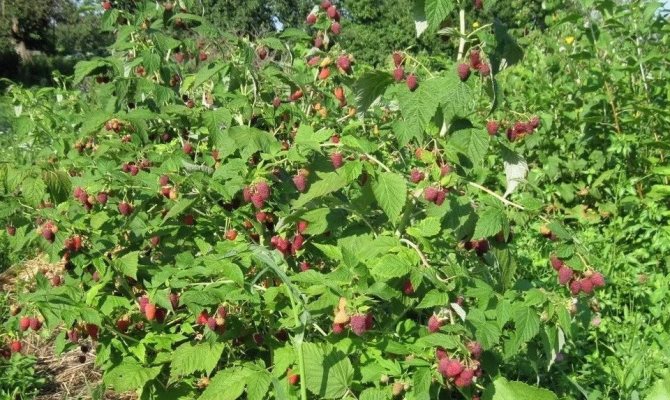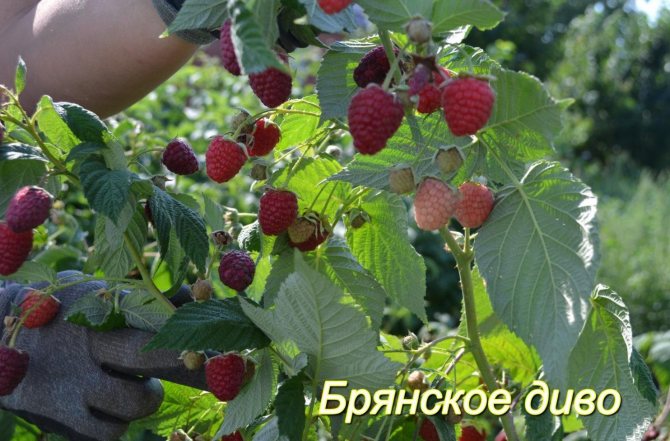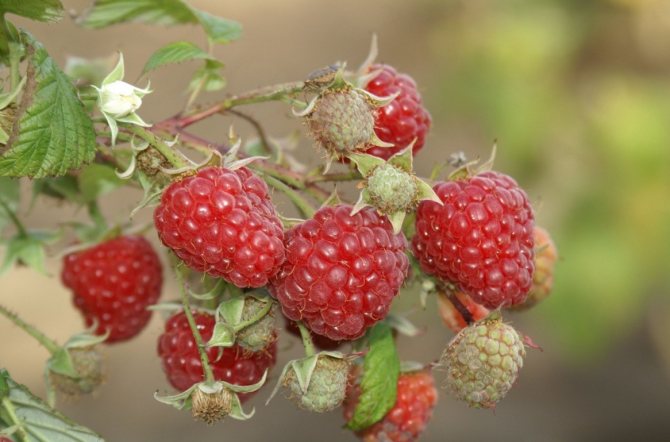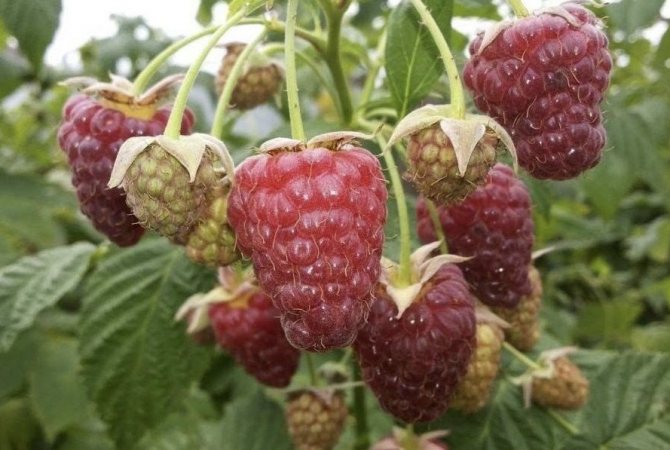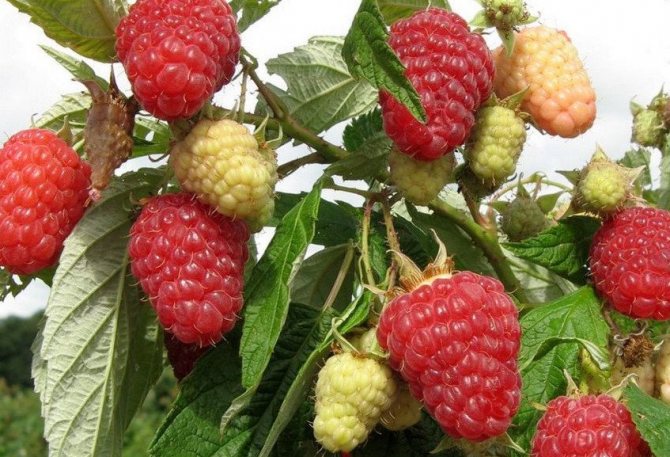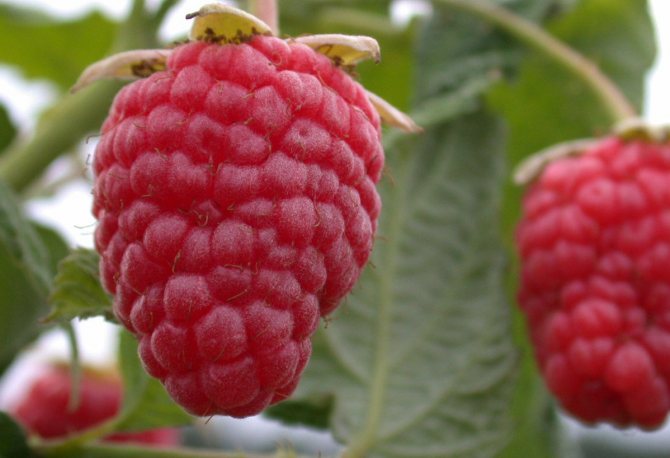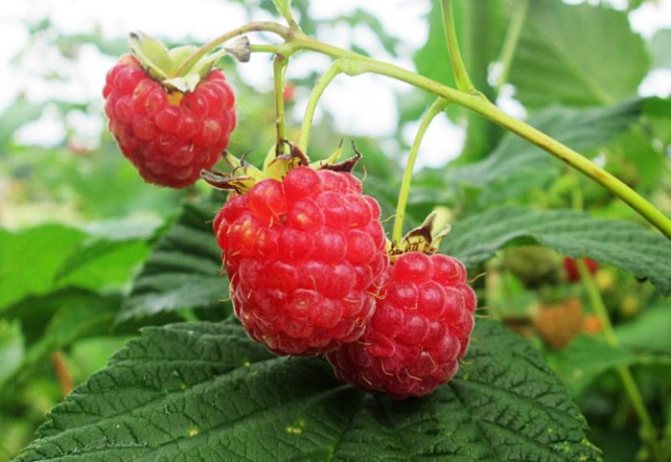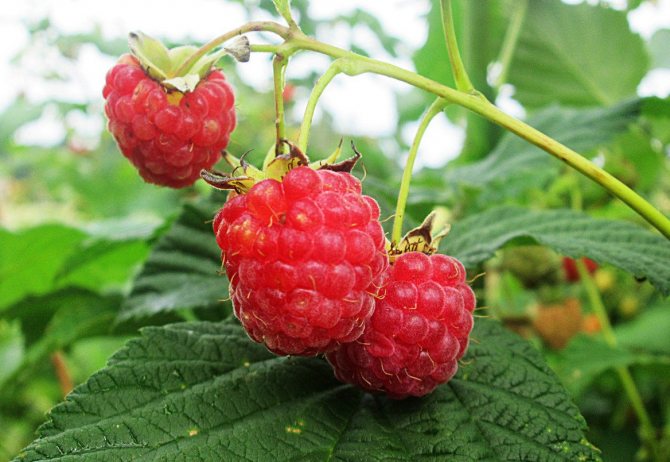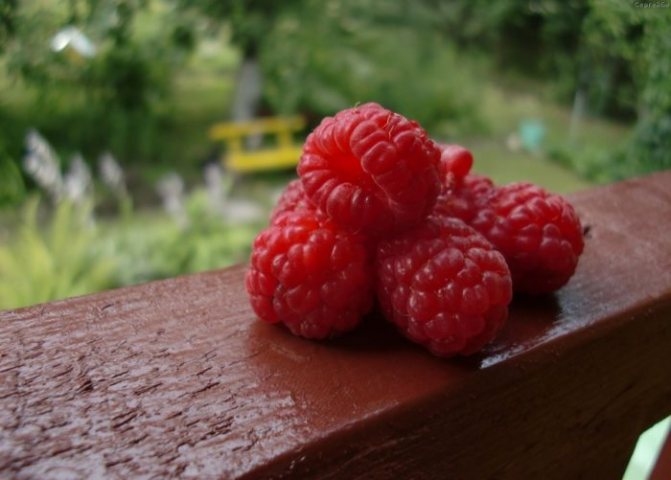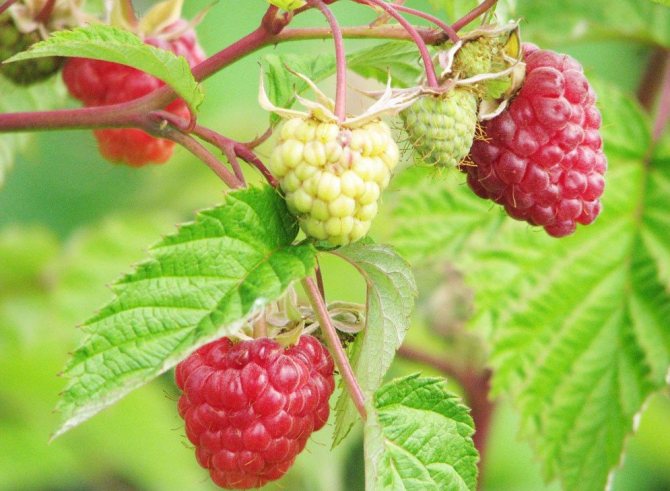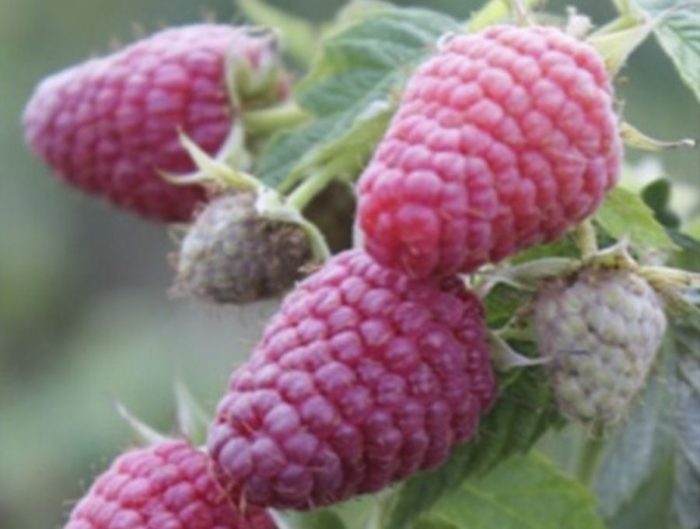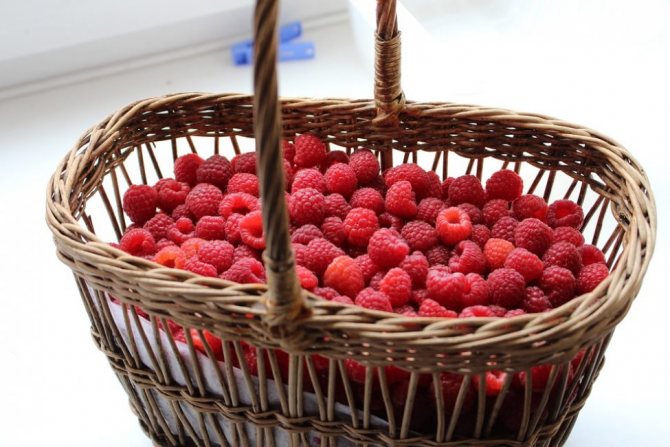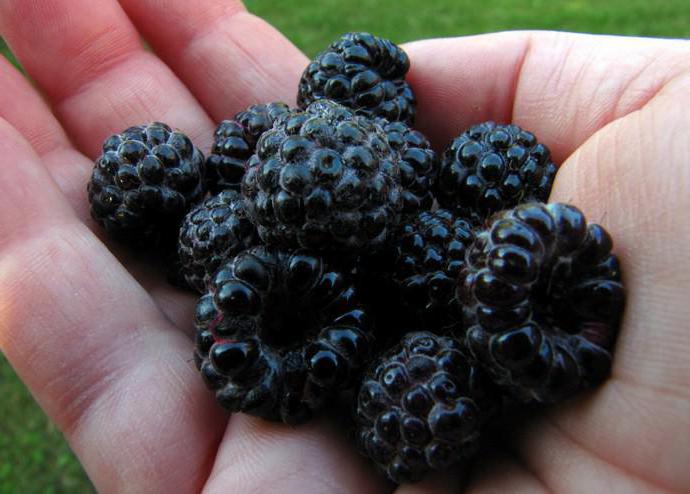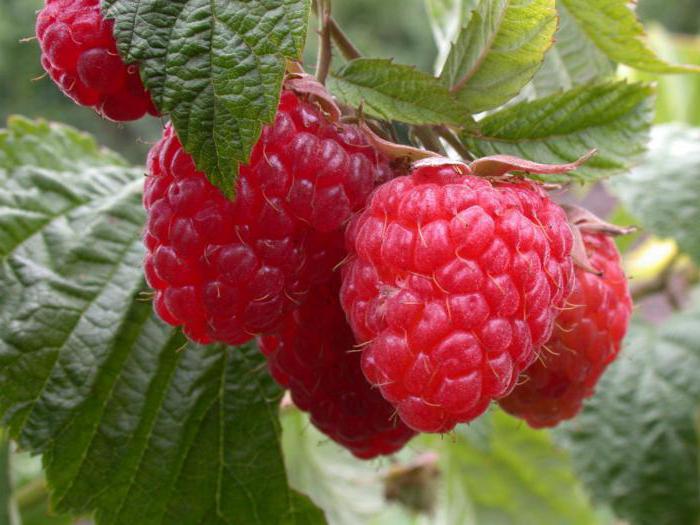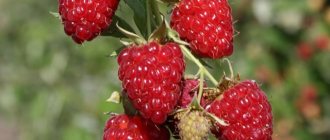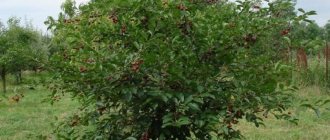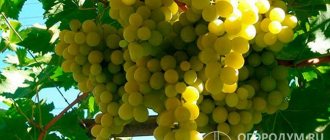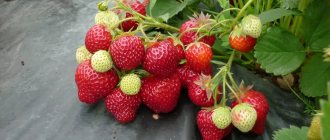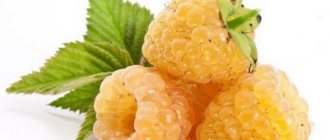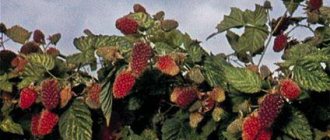Since summer in Siberia passes very quickly, it is not necessary to sort out the varieties of raspberries, choosing the right one for planting. But even for such a climate there is a kind of berry that will delight the taste buds of every person. Even the Siberian cold will not be an obstacle to growing crops.
Breeders have developed a large number of varieties of remontant raspberries, which will take root in regions with a harsh climate. It is very important not just to choose the best bush, but to constantly look after the plant.
Repaired raspberries are characterized by the following qualities:
- Frost resistance;
- Rapid ripening of berries;
- Disease resistance.
How to choose raspberry varieties for Siberia
To find the right plants, do not discount the following factors, which include:
- to the climate;
- the weather of the region;
- soil types;
- characteristics of different cultures.
All this must be taken into account when choosing. So that the variety that will grow in your raspberry plant is liked by its taste, size, and quantitative characteristics. Thanks to many years of experiments with planting various raspberry crops, gardeners have decided on the best varieties that give good yields in Siberia and the Urals. They concluded that winter-hardy raspberries will thrive here.
We suggest that you familiarize yourself with the rating of a popular berry, if you have a desire, to breed a raspberry.
Preparing raspberries for the Siberian winter
You need to prepare for the cold weather in the summer. In order for the wood to mature better, gardeners recommend feeding the raspberry plant with phosphorus-potassium fertilizers. Before the onset of cold weather, the roots of the plant should be thoroughly saturated with moisture. It is important to remove the last berries, cut off the shoots and mulch the raspberry root system with foliage or peat. It is important to install fences that will keep snow in the raspberry patch. If the snow cover regularly blows out, or winters in the region are not very snowy, you can use additional shelter.
In the spring, it is very important to have time to remove the mulch in time so that the roots and shoots of the plant do not burst into flame as soon as the warm weather sets in!
Early ripe raspberry varieties for Siberia
They are characterized by berry sweetness, aroma, high stems from 2 to 2.5 m. With half-spreading bushes. They have a small number of stems. They calmly relate to the winter cold, do not require a thorough inspection. They give high yields.
Siberian Ogonyok
Average spreading of the stems. They give large, hemispherical berries, about 5.5 g. They can withstand cold snaps and diseases. These crops are for Siberia, with an average ripening period.
Raspberry variety for Siberia Reward
A crop with a high yield. With small semi-spreading bushes, up to 2 meters and waxed. With pale red, medium, oval fruits. Plants can get sick with anthracosis, didimella. Therefore, if you start this variety, then be sure to carry out preventive treatments.

Gift of Siberia
Plants contain large and dessert fruits with a black tint. They are similar in appearance to blackberries. Each bush yields about 4.5 kg. Prolonged fruiting will allow the berry to be picked in several waves.
Raspberry variety for Siberia Vera
Genetic specificity influenced the good qualities of Vera. Bushes 1.5 m, with half-spreading branches, with medium-sized stems and dense foliage. Fruits weighing from 1.8 to 2.7 kg, with a sour - sweet aftertaste from the rich pulp.
Barnaul
Repaired plants with slightly spreading, straight shoots. A lot of replacement shoots appear in the variety. Fruits from 1.8 to 2 g, have ovoid form, sweet with sourness, aromatic aftertaste.
Shiny
This is a versatile crop, frost-resistant. Shrubs do not ask for undue attention. With medium growth up to 1.5 m and fruits with large size data from 2.5 to 5.5 g. With dense, rich red pulp. Raspberries are not only for Siberians. She can be found everywhere.
Monomakh's hat
More on the topic: Standard raspberries of the Glen Ample variety
Although the variety has compact shrubs, they have powerful shoots. When new stems grow, they stretch slightly towards the bottom. Their length is 1.5 m. You can get from 4 to 5 kg of fruits from one plant, sweet, with a slight sourness.
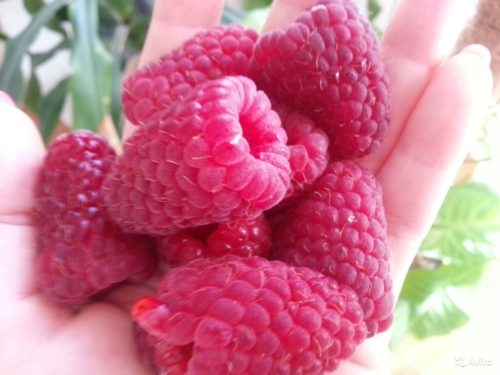

Indian summer
With a slight spreading and straight-growing stems, with not thickened foliage. And also, with medium-sized, conical, red berries 2 - 3.5 g. Having tasted this berry, you will feel sourness, with a delicate pulp aftertaste and practically no aroma.
Raspberry variety for Siberia Inaccessible
The fruits will delight you already at the beginning of August, and fruiting will last until the first cold days. Stems are perfectly even in shape with large fruits.
Bryansk miracle
The uneven ripening of berries makes it possible to harvest in several waves. From each bush, the culture will give you about 4 kg of fruit. Although the Bryansk miracle of frost is not afraid, but when it is very strong, it will feel calmer under the snow and agricultural cover, otherwise it will freeze, which will negatively affect the abundance of the harvest. The fruits are used in any form: fresh and prepared.
Chief
Mid-ripening berry with high frost resistance and high yield from 3.5 to 4.5 kg per plant. In low shrubs, with an upright position, the berries have a rounded shape, a bright aroma and a sweet and sour aftertaste. The stems do not bend to the ground.
Early variety Zarya Vechernaya
The crop begins to bear fruit early, in early August. Fruits, up to 4.2 g, with a conical shape, with a raspberry-colored skin, can be harvested for a long time. Plants have upright shoots.
Raspberry variety Apricot
A culture with miniature and slightly spreading shoots. Stems with strong, upright construction. Fruits about 3 g, with an unusual yellow color and blunt-conical shape. With a sweet and sour taste and a light raspberry aroma. They are of medium density.
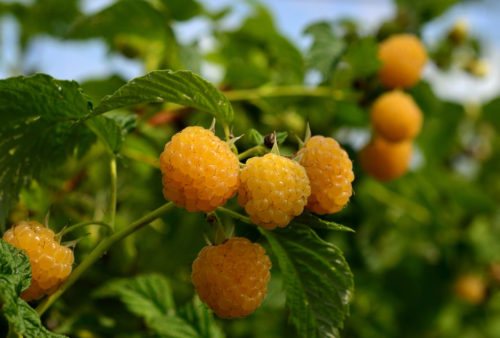

Large-fruited raspberry varieties for Siberia Eurasia
The berries ripen early and there are many of them. They have a conical shape, weighing 4.5 g. They are maroon, matte. Medium-bodied, sweet and sour aftertaste. The fruit has a light aroma.
Hercules
The raspberry Hercules has such bushes that it bears fruit at most of their height. And they have it up to 2 m. You can pick berries weighing up to 6 g. And if you follow all agrotechnical conditions, then you can safely enjoy 3 waves of the harvest.
"Indian summer"
It is safe to attribute this sort of remontant raspberry to the best varieties for Siberia. The creator of the "Indian Summer" is Professor I. V. Kazakov. He crossed two varieties - "Kuzmin's news" and "Kostinbrodskaya".
The raspberry bush of this variety is low, on average about 1-1.5 meters. And it does not differ in special spreading. Raspberry shoots are straight, covered with a light waxy coating and thorns. Indian summer raspberry leaves are of medium size, with small wrinkles, slightly twisted.Raspberry fruits of the Siberian variety are red in color, have a pleasant taste, delicate pulp and a very weak aroma. The size of the berries is average, usually 2-3 grams, but sometimes it reaches 3.5 grams. The shape of the berries is a truncated cone.
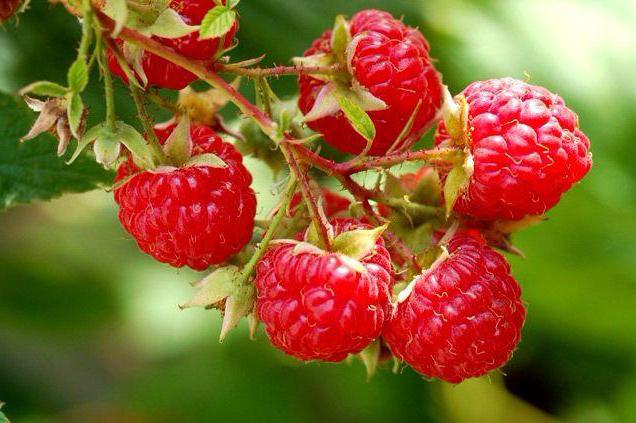

Of course, the main advantage of the "Indian Summer" is its renovation. Gardeners can harvest on both annual and biennial shoots. In the first case, the autumn harvest will be much larger, and the harvest can be started earlier. And the harvest will end with the first frost. That is, it will be possible to enjoy fresh fruits even when others will only remember the taste of fresh berries. It is worth noting that the yield of this variety cannot be called high: on average, about a kilogram of berries can be harvested from one bush. However, subject to all the intricacies of care, you can collect at least three kilograms of sweet fruits. For Siberia, this raspberry variety has another significant advantage: even with a large amount of precipitation, the berries do not begin to sour and do not lose their sweetness. "Indian Summer" is resistant to curliness, gray rot. In addition, it perfectly tolerates frost - even -30 ° C will not be a problem for raspberries.
Not without its drawbacks. Indian summer raspberries do not have high transportability, and therefore should either be eaten immediately, or desserts should be prepared. In addition, the variety often infects spider mites, powdery mildew and purple spot.
By the way, one more variety of raspberries was recently bred for Siberia - "Indian Summer 2". Its fruit is larger than that of its predecessor, about 4 grams. The yield of the new variety is greater, and the spider mite is not afraid of it.
When, at what time do raspberry varieties ripen in Siberia
To know exactly when your raspberries will begin to ripen, you must decide which variety you would like to have on your site.
But just be aware that the exact date will always depend on the features:
- climatic conditions;
- soil types;
- the use of agricultural technology.
According to statistics, raspberries ripen in Siberia within 40 - 70 days. But you can calculate more accurate terms if you familiarize yourself with the features of the plants that you would like to have in your raspberry tree.
Where to buy raspberry seedlings
The Scientific and Production Association "Sady Rossii" has been introducing the latest achievements in the selection of vegetable, fruit, berry and ornamental crops into the wide practice of amateur gardening for 30 years. In the work of the association, the most modern technologies are used, a unique laboratory for microclonal reproduction of plants has been created. The main tasks of NPO Sady Rossii is to provide gardeners with high-quality planting material for popular varieties of various garden plants and novelties of world selection. Delivery of planting material (seeds, onions, seedlings) is carried out by Russian post. We offer the best raspberry varieties, zoned for central Russia and Siberia. Basically, these are varieties of an outstanding Russian breeder - academician I.V. Kazakov. We are waiting for you for shopping: NGO "Gardens of Russia"
Large-fruited raspberry
These are large-fruited varieties with a yield per crop of about 4 kg. Fruits weigh 4 - 12 g. The culture is planted in the autumn. If you arrange a raspberry tree with such plants, they will delight you for ten years with their delicious berries.
The only "Achilles' heel" is that the culture is not hardy enough. Shoots freeze out very often. But there is also a way to preserve the culture. Try to bend the bushes to the ground for the winter and cover it with snow. Remember that during snowless winters, you can use a covering material.
Methods for keeping row spacings
The degree of plantation moisture is the primary factor influencing the choice of aisle maintenance that raspberries require. The description of the technology for removing moisture or retaining it is as follows:
- In the area of excessive moisture, the areas between rows are usually tinned, that is, planting between rows of special lawn grass. Its leaf mass increases the removal of excess moisture and provides a better water-air regime in the soil layer where the roots are located. Therefore, even in wet, rainy weather, there is no mud and slush in the aisles.


- With a lack of moisture or its excessive evaporation, the aisles are mulched with straw. The light layer of mulch usually has a temperature a couple of degrees lower than the air temperature. Therefore, after the sun sets, moisture condenses from the air and returns to the soil. That is, the so-called "dry irrigation" of the beds takes place.


Read also: Raspberry pests and the fight against them: the best drugs and folk remedies
Also, the light color of the mulch reflects the rays of the sun, giving light to the rows from below, which has a beneficial effect on how raspberries develop - varieties for Siberia need additional lighting.
Yellow-fruited raspberry varieties for Siberia
In Siberia, such raspberries are rarely grown, but they are very tasty. And consumers have appreciated this for a long time. Therefore, those who from Siberians start such varieties use them with pleasure.
Because plants:
- Decorative component. Yellow bushes look very beautiful in landscape designs. The bushes are simply formed and do not expand in width.
- Caloric value. Anthocyanins in yellow fruits are practically absent. But there is a friendship between sugar and acid.
- Long return of fruit. Due to the uneven ripening of berries, you can feast on delicious berries for a long time.
for the Urals and Siberia
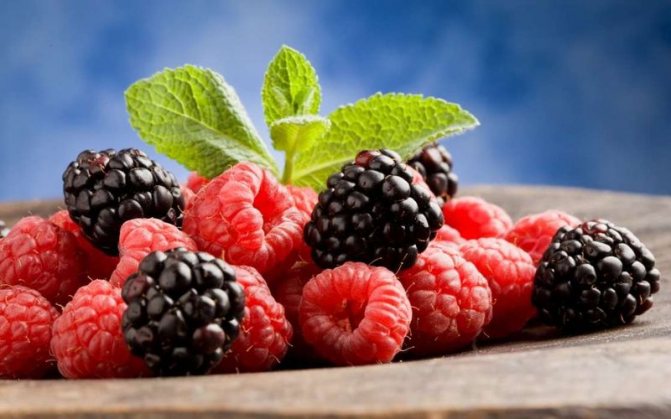

Raspberry is a ubiquitous inhabitant of Russian gardens. The sweet aromatic berry is not inferior to strawberries in popularity, taste and useful properties, adequately taking over the berry season from it. And raspberry jam has long become a favorite delicacy, a medicine for colds and a standard of taste characteristics.
| ARTICLE IN THE TOPIC: Repaired raspberries - the best varieties for the Urals and Siberia |
Gardeners often face the problem of choosing a raspberry variety, which is primarily due to the huge varietal diversity of this crop. For the correct solution of this problem, it is important to take into account not only the potential productivity, but also take into account the specific ripening dates of a particular variety, its zoning and even aesthetic belonging.
CONTENT:
- Harvest varieties of raspberries
- Large-fruited raspberry varieties
- Remaining raspberry varieties
See also:
- Yellow raspberry varieties
- Black raspberry varieties
- Raspberry-blackberry hybrids
- Rose-leaved raspberry
- Japanese raspberry
[/ td]
|
Traditional raspberry varieties have been cultivated for over 500 years. But today, gardeners are increasingly attracted by the new assortment of this berry bushes. High-yielding, large-fruited, remontant and colored raspberry varieties with improved taste and aroma conquer the hearts of gardeners in all regions of Russia. We present to you the best of them.
Chokeberry varieties
Blackberry-like crops are perennial specimens. These plants were presented to us by the North Americans. Black berries are distinguished by their sweetness, honey flavor. There is absolutely no sourness in them. On the other hand, there is the presence of ellagic acid, which is used for prophylactic purposes in the fight against oncology.
As well as yellow-fruited plants, so these gradually begin to spread in Siberia.
And raspberry varieties for Siberia began to enjoy popularity:
- Polish Litach, with vigorous shoots. With curved stems and large spines. Fruits are small in size, spherical in shape.
- Early maturing Ember. With stems of medium vigor, small fruits and juicy flesh. Gardeners who have this crop growing on their plots are happy. Bountiful harvests are collected.
- Bristol, which loves planting in well-lit areas. Not indifferent, in a positive sense, to slightly acidic soils. But you will not wait for root offspring from him. But it gives round berries with a sweet aftertaste.
Pros and cons of remontant annual raspberries
The advantages of this raspberry culture include:
- removal of fruiting stems simplifies the fight against pests and diseases;
- no need to cover for the winter;
- the use of chemicals is minimized;
- the time of consumption of fresh raspberries has been extended;
- varieties do not need a garter and trellis arrangement;
- dense berries that do not crumble, allow organizing mechanized harvesting on large areas;
- remontant varieties give few replacement shoots and shoots, which simplifies the fight against thickening, but complicates the reproduction of raspberries.
The main disadvantage of these varieties is the high price of seedlings, which is due to the difficulties of reproduction associated with a small number of offspring. This is due to the fact that annual remontant varieties give all their strength to the formation of a bush and a crop on it, so that the roots and shoots do not have time to develop.
Sweet varieties of raspberries for Siberia
For the berry to be sweeter, it must have a good sugar and ascorbic content. Then the fruits will be sweet and aromatic by the time they begin to ripen.
If you want to plant sweet, large-fruited raspberries on your Ural or Siberian site, then we suggest meeting:
- With "Treelike", with large and juicy fruits, weighing up to 17 g, you can use them for harvesting, and eat fresh.
- "Sunshine". The culture is sweet, not demanding. And the yield is good - from 6 to 7 kg, from one bush.
Plants with abundant fruiting
Of course, everyone wants to have plants in their raspberries that would please with good harvests. This is one of the main conditions for choosing varieties. And, as you know, berries ripen in accordance with:
- their genetics,
- climate;
- fertile soils.
With the "Gusar", which was bred by Russian scientists, you can achieve high yields.
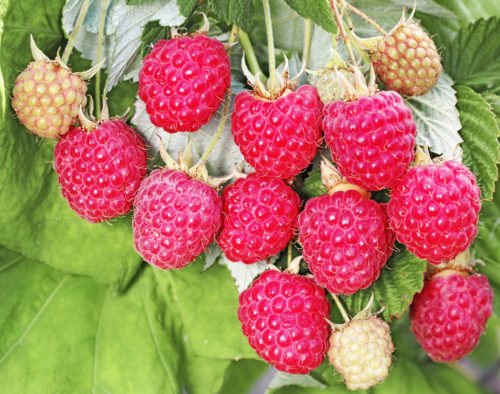

With these characteristics, he can live in your garden:
- With dense pulp. Therefore, when transporting fruits, even over long distances, there will be no problems. They will keep their presentation.
- The culture is grown in the southern and northern regions of Siberia.
- When leaving, you just need to be guided by agrotechnical standard rules.
- Ripe berries are very resistant to decay processes. Therefore, take them off the bushes slowly.
Further care
Caring for a raspberry plantation includes watering, loosening, weeding, pruning, feeding, preventing and treating diseases. Competent care of the plant will allow you to achieve high yields and good taste characteristics of the fruits.
Watering is required in the spring after the awakening of the raspberry bush. In the conditions of a rainy Siberian summer, additional moistening of the soil is not required. It is enough to cover the soil with straw.
Loosening is necessary because raspberries love light, breathable soil. Do not dig deep into the soil to avoid damaging the root system. Loosening can be combined with weeding. Pruning is done in spring and fall. In preparation for winter, young shoots, old shoots are removed, and from remontant raspberries - all branches. In the spring, sanitary pruning of frozen and damaged shoots is carried out.
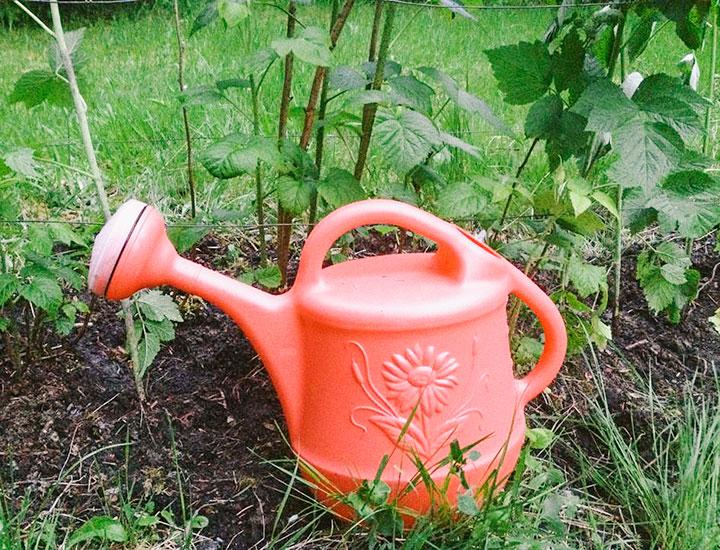

Top dressing of raspberries grown in Siberia is especially important for areas with poor soil. Mineral and organic fertilizers are applied to the planting pit, then the plant is fed annually in spring and during the fruiting period.
With proper care, the plant will have strong immunity, sufficient to prevent damage from diseases and parasites. Despite this, it is necessary to regularly inspect the bush and carry out preventive treatments.
Transfer
Raspberry bushes are recommended to be replanted about once every 5 years, because with long cultivation in one place, the soil is depleted and the quality and quantity of the crop deteriorates. Like planting, transplanting is done in the spring before bud break or in the fall a few weeks before frost. In Siberia, a spring transplant is carried out around May, an autumn one: in late August - early September.


Raspberry transplant is carried out by root or green cuttings, root suckers or dividing the bush. The operation is performed in the evening or on a cloudy day; sunny hot weather will not work.
Agrotechnics
You are already, of course, aware that without agricultural technology, plants will not be able to provide you with good harvests. But this is after you choose raspberries for your region of Siberia.
And before planting, you need to make sure that the plants you are planting are:
- frost-resistant;
- with continuous fruiting;
- re-formation of inflorescences;
- high yield;
- good adaptation and strong immunity.
And remember that ripening berries during the growing season must have appropriate conditions. If the days are very rainy or cold, the plants will slow down their development. And freeze in winter.
Features of cultivation
In the same place, raspberry bushes can produce good harvests for about eight years. This is followed, as they say, "soil fatigue." It is expressed in the fact that the reserves of nutrients are depleted, at the same time the root system is aging. In addition, various pathogenic microflora accumulates on the plantation, and raspberries deteriorate.
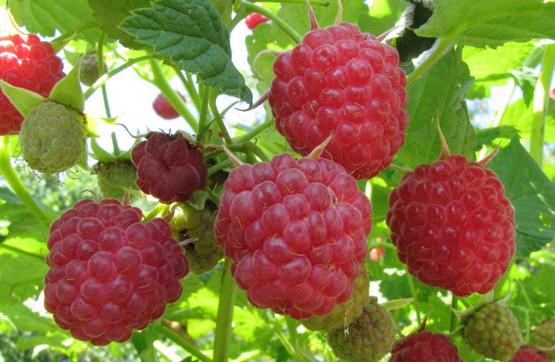

The description of the solution to this problem contains various systems of crop rotation:
- The plantation is laid on half of the planned area. After four to five years, the planting moves to the second half, and the first writhes.
- If the area is large enough, a new plantation is laid out annually. This ensures the presence of all age groups and a continuous turnover.
- Alternation of plantings of raspberries, vegetables (except for nightshades) and "vapors".
Best of all, raspberries will thrive on a plateau of medium elevations and gentle slopes located on the northwest or west side.

